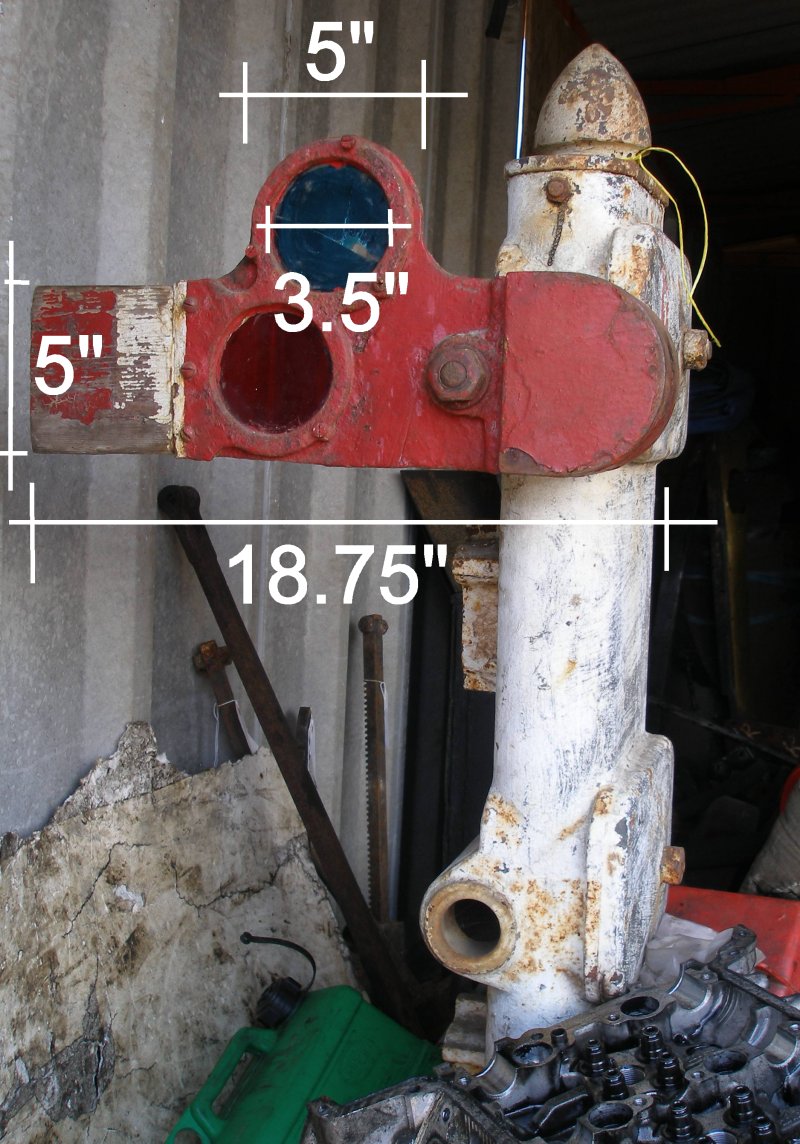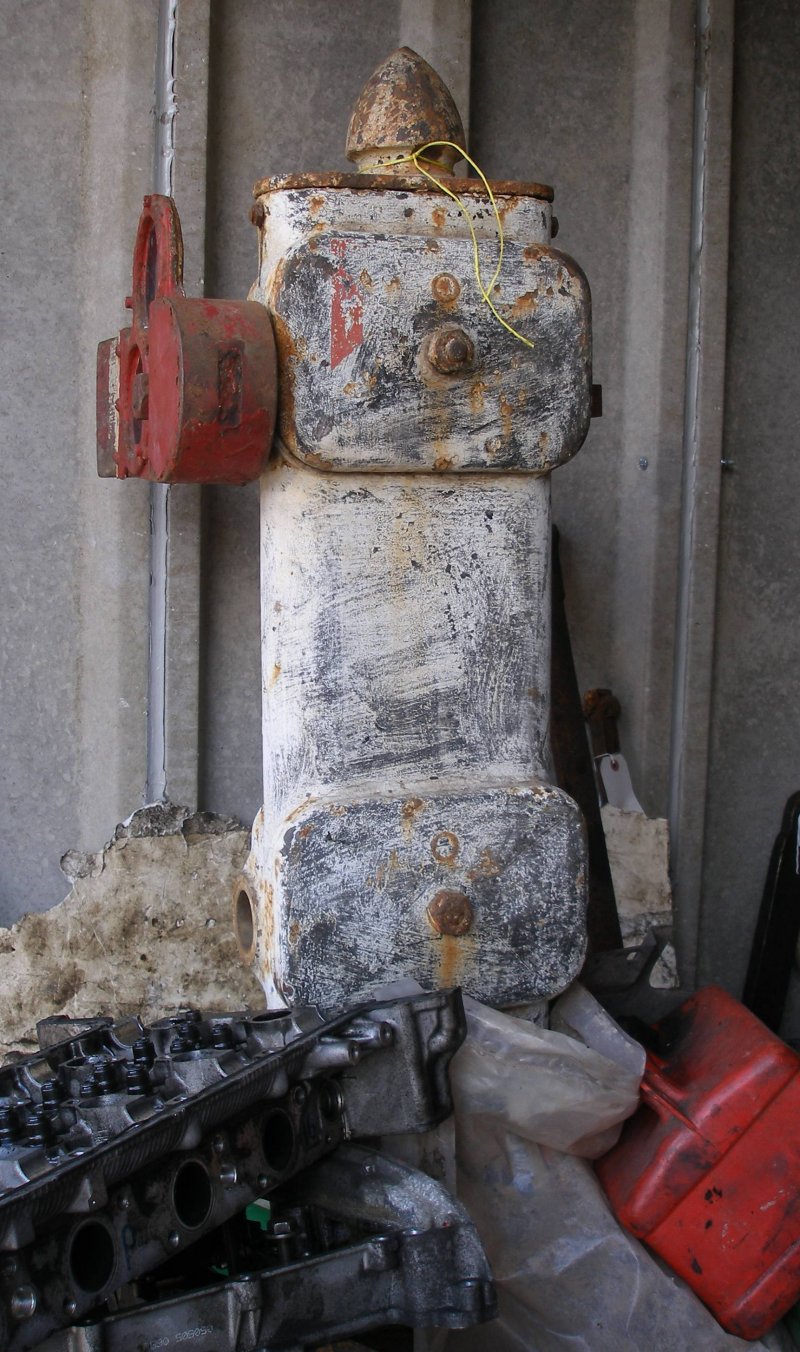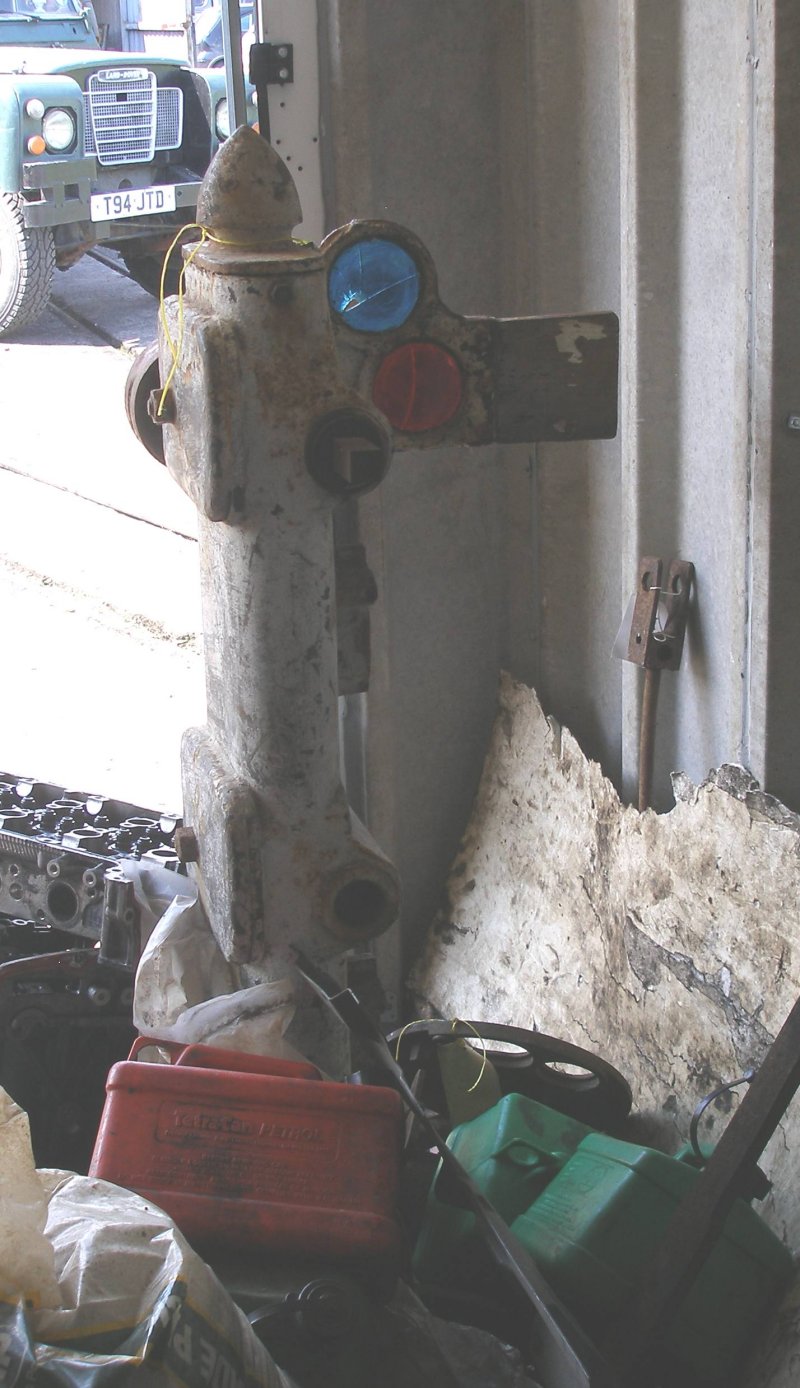
Lancashire & Yorkshire Railway signalling survivors:
Electro-pneumatic ground (dwarf) signal
The Bala Lake has two Lancashire & Yorkshire Railway ground signals: a two-arm mechanical signal previously located opposite the signal box, and a two-arm low pressure pneumatic signal, presumed to be from Bolton West. These signals were manufactured by Westinghouse and installed at Bolton (from September 1903) and Southport (1918). These had an india-rubber tip to the arm to reduce the risk of injury. The use of wood was apparently to reduce the risk when situated close to live third rails, as would certainly be the case at Southport. The L&YR electrification never got to Bolton, but Bolton may yet see the 'sparks effect' as it is not one of the currently descoped electrification plans announced after the 2015 General Election.
Electro-Pneumatic Ground Signal
Bolton West
Note how the tip is clearly of wood, whilst the body - including the spectacle plates - is cast iron. There is no evidence of the india-rubber tip. The second, lower, arm was probably removed during its time at Bolton, as the layout of the station was greatly simplified prior to the abandonment of the electro-pneumatic installation.




A photo of a single-arm electro-pneumatic dwarf signal in BR days at Bolton West can be viewed here, and a shot showing it 'off' here. However, also on Flickr, is this very interesting photo by David Ingham of a two-arm electro-pneumatic dwarf signal with only the upper arm present in-situ at Bolton...sadly, there are sufficient detailed differences to suggest this isn't the same signal.
A note of the Lancashire & Yorkshire Railway's electro-pneumatic signalling
John Marshall in his three volume history of the Lancashire & Yorkshire Railway suggests that the Bolton West installation was the first in the country. In the L&YR Society newsletter number of 137 of January 1986Trevor Sutcliffe notes that there were, in fact, other prior Westinghouse installations at Bishopsgate (GER) and Tyne Dock (NER), although these were for goods lines. The LSWR had a main line installation dating from 1902 which included automatic operation with the signals returning to danger when trains passed, and cleared automatically once the section was unoccupied.
The Bolton West installation was a pioneer in that it was the first electro-pneumatic installation to control a triangular junction used by passenger trains, with one box controlling all three junctions. Trevor suggests that the scrapping of the installation was due to subsidence, with the box sinking by over a foot since 1903. The box was entirely built of timber but the lower portioned had been covered by brick during WW2.
The demise of Bolton West was recorded in the LYRS Newsletter number 141, along with Bolton East and Burnden Junction; control was transferred to a Portakabin adjacent to the old Bolton East box in mid-1986.
The 'elecro' part of the Westinghouse system can be seen in a recent installation on a Welsh narrow gauge railway, as the Ffestiniog Railway has used parts of a frame salvaged from Doncaster at its Porthmadog Harbour station.
